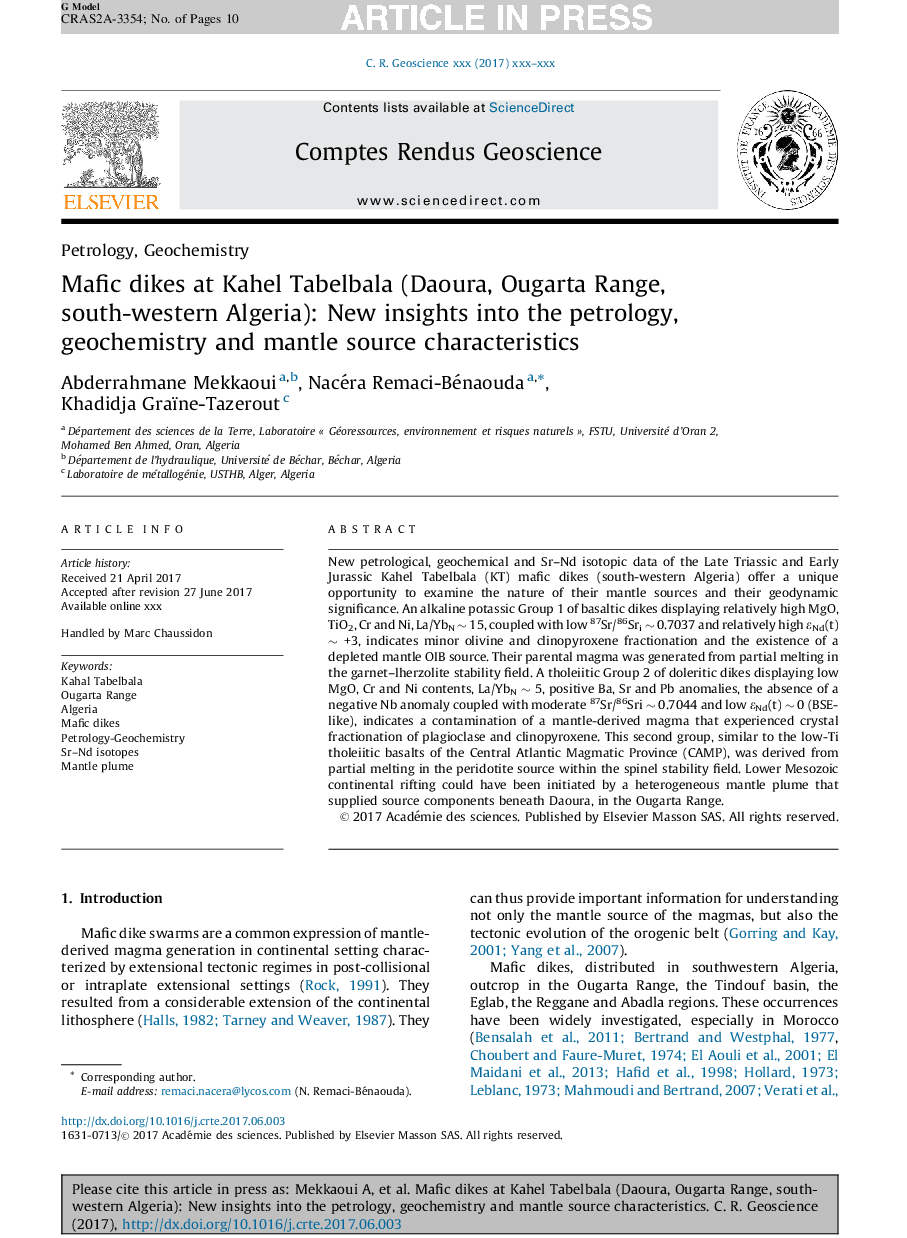| Article ID | Journal | Published Year | Pages | File Type |
|---|---|---|---|---|
| 5755137 | Comptes Rendus Geoscience | 2017 | 10 Pages |
Abstract
New petrological, geochemical and Sr-Nd isotopic data of the Late Triassic and Early Jurassic Kahel Tabelbala (KT) mafic dikes (south-western Algeria) offer a unique opportunity to examine the nature of their mantle sources and their geodynamic significance. An alkaline potassic Group 1 of basaltic dikes displaying relatively high MgO, TiO2, Cr and Ni, La/YbN â¼ 15, coupled with low 87Sr/86Sri â¼ 0.7037 and relatively high ÉNd(t) â¼ +3, indicates minor olivine and clinopyroxene fractionation and the existence of a depleted mantle OIB source. Their parental magma was generated from partial melting in the garnet-lherzolite stability field. A tholeiitic Group 2 of doleritic dikes displaying low MgO, Cr and Ni contents, La/YbN â¼ 5, positive Ba, Sr and Pb anomalies, the absence of a negative Nb anomaly coupled with moderate 87Sr/86Sri â¼ 0.7044 and low ÉNd(t) â¼ 0 (BSE-like), indicates a contamination of a mantle-derived magma that experienced crystal fractionation of plagioclase and clinopyroxene. This second group, similar to the low-Ti tholeiitic basalts of the Central Atlantic Magmatic Province (CAMP), was derived from partial melting in the peridotite source within the spinel stability field. Lower Mesozoic continental rifting could have been initiated by a heterogeneous mantle plume that supplied source components beneath Daoura, in the Ougarta Range.
Related Topics
Physical Sciences and Engineering
Earth and Planetary Sciences
Earth and Planetary Sciences (General)
Authors
Abderrahmane Mekkaoui, Nacéra Remaci-Bénaouda, Khadidja Graïne-Tazerout,
